There was no blog post last week as I was away in Cambridge so I’m sticking with the idea of short posts with pictures and a bit more about daily life. It means that I get fewer views on my blog but people who do read it seem to like it.
Most of the colleges are closed to the public at this time of year, although we did visit Kings and the chapel there is every bit as amazing as people say.
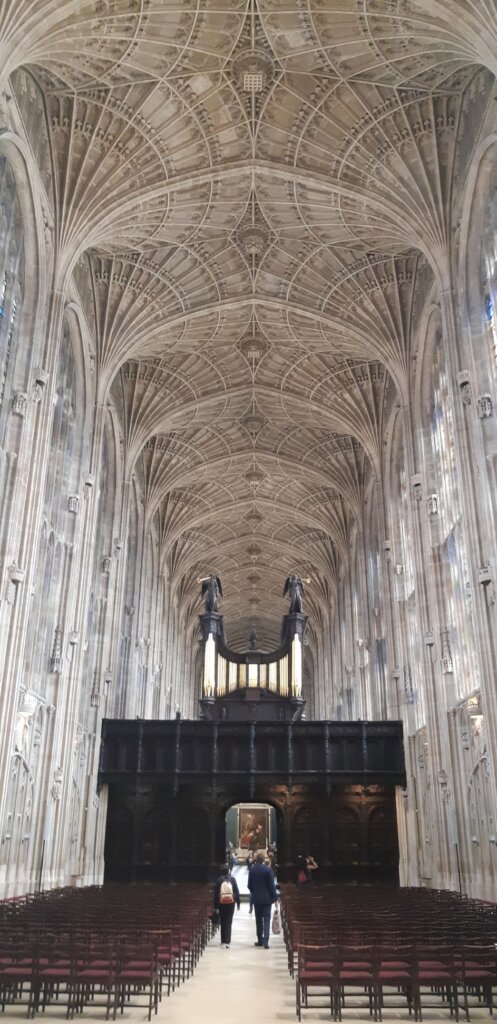
Although the fan vaulting is what makes the building unique, the amazing 16th century stained glass (which somehow survived Cromwell’s Commissioners) is also special. Those tall windows with their elaborate pictures reminded me of the Sainte Chapelle chapel which I saw on my recent trip following Burke’s adventures in Paris. In fact, King’s College chapel was very influenced by the French royal chapel.
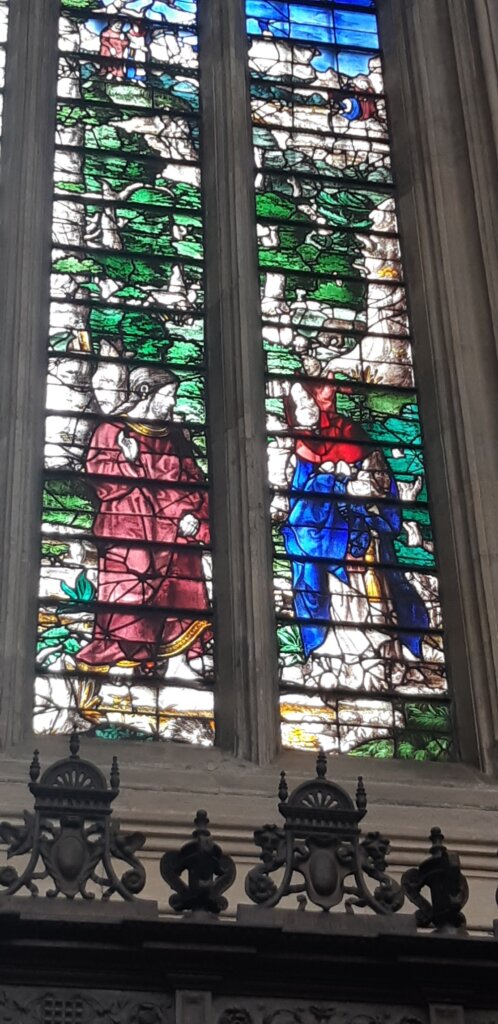
Christ tempted by Satan in one of the windows.
With the colleges closed, we spent a lot of our time in the Fitzwilliam Museum. Founded in 1816, the collection has a lot of Georgian and early 19th century material which is particularly interesting to me, partly because of the stories I’ve written set in this period and partly because of the amount of time I’m spending in Marble Hill House these days. Near the entrance of the Fitzwilliam is this statue of George II who paid for much of Marble Hill.
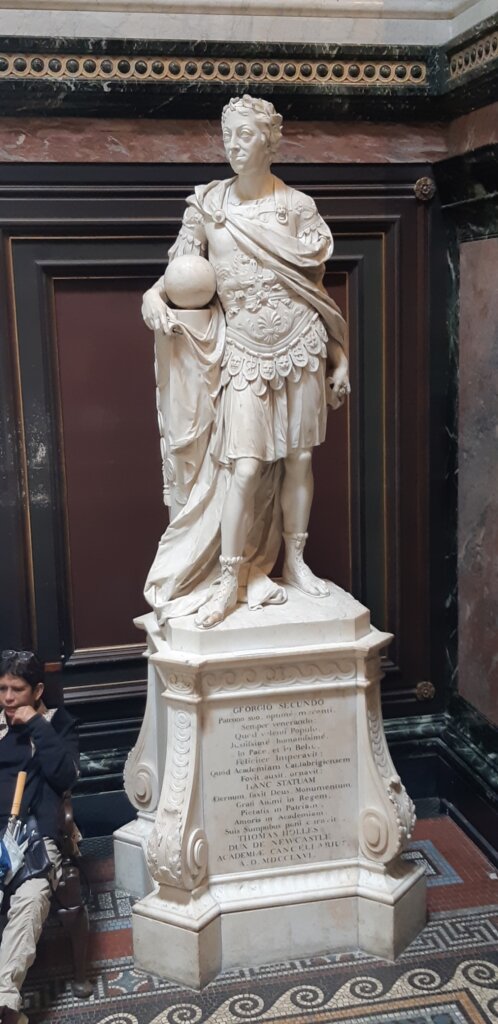
George II wasn’t the sharpest knife in the drawer and I think the statue catches that.
There’s a lot of 18th-century embroidered upholstery in the museum which, again, caught my eye because of the embroidery in Marble Hill House. You can see an example of embroidered upholstery in the photo below.

I’m interested in who did this embroidering. It seems that they were made by Georgian women with too much time on their hands. They couldn’t be seen doing anything as vulgar as a job, so they really did have a lot of time to fill. You could buy pre-drawn embroidery patterns to stitch, just as you can now, or you could draw your own.

Modern Embroidery Kit
There’s a lot of embroidered upholstery in the Fitzwilliam, which had me wondering if some, at least, were stitched by women for whom it wasn’t a hobby, but a job. I looked for any indication of the people who have produced this work but, presumably because they were mere women, none of them seem to have been credited with their creations.
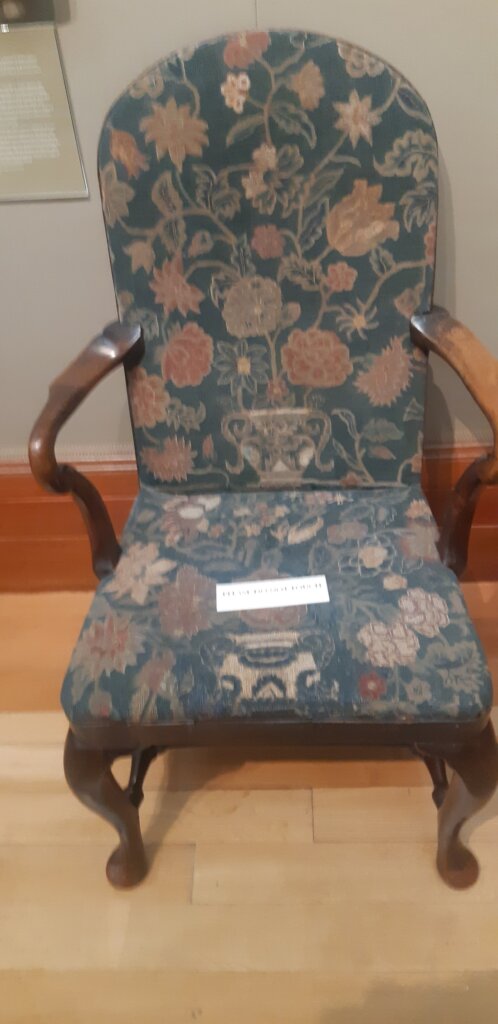
Henrietta Howard, whose home Marble Hill was, was a great collector of chinoiserie, wildly fashionable in the 18th century. There’s a lot of it in the Fitzwilliam.
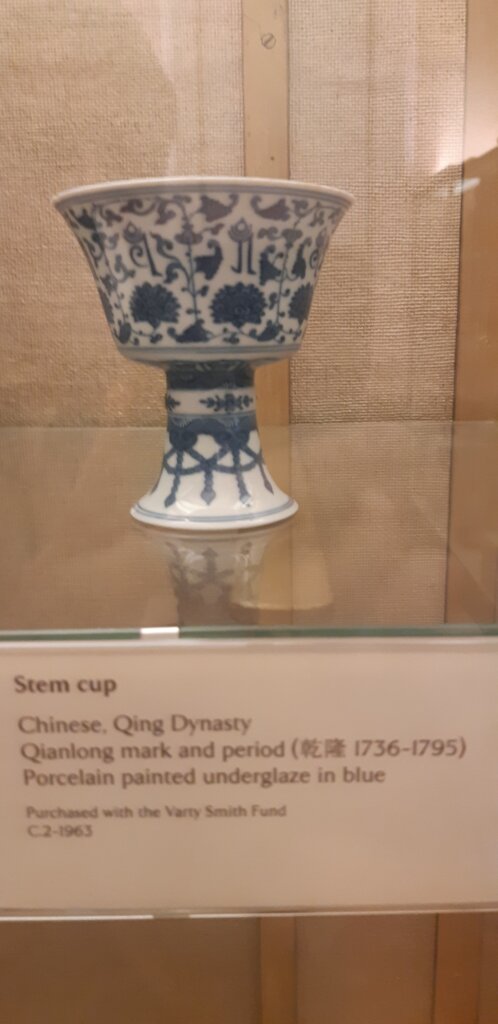
Perhaps Lady Suffolk’s enthusiasm for fine china was a reaction against the English earthenware that she must have grown up with. There’s a lot of that in the Fitzwilliam too.
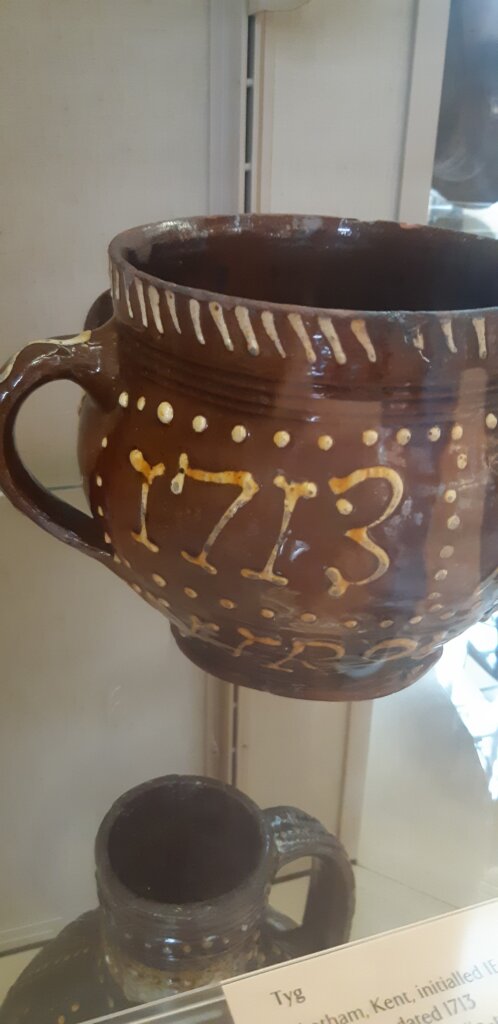
One final exhibit very tenuously linked to Henrietta and then I’ll shut up.
This sculpture is supposed to represent a woman epitomising Reason. (It’s next to a much racier lady representing Love.) Notice the hand touching the face. It’s supposed to imply scholarly or poetic thoughts.
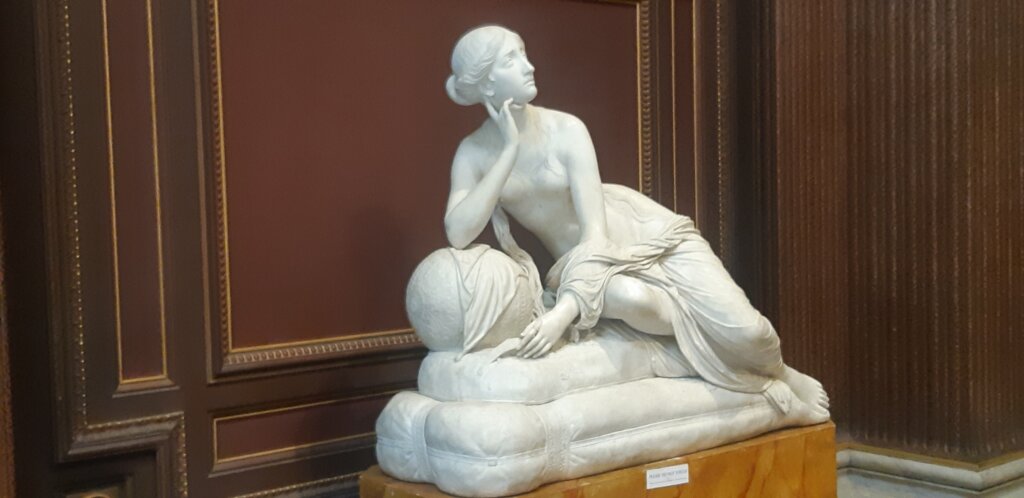
Art historians would have you believe this trope was established in the 17th century, well before this painting of Henrietta Howard was commissioned by Alexander Pope.

My wife, who is not an art historian but likes to check these ‘well-known facts’, looked at over 2,000 portraits in the National Portrait Gallery and found that this ‘hand-to-face’ pose was very rare in the 17th century. It seems to have taken off with Pope who not only commissioned this portrait of Henrietta but had multiple portraits made of himself, many of them in this ‘scholarly’ pose. By 1832, when the sculpture was made, this was a recognised bit of symbolism but it seems likely that Henrietta was the first woman to be shown like this.
So all the way to Cambridge, just to be reminded of our local stately home. It was a fun and interesting trip anyway. I hope you like the pictures.
